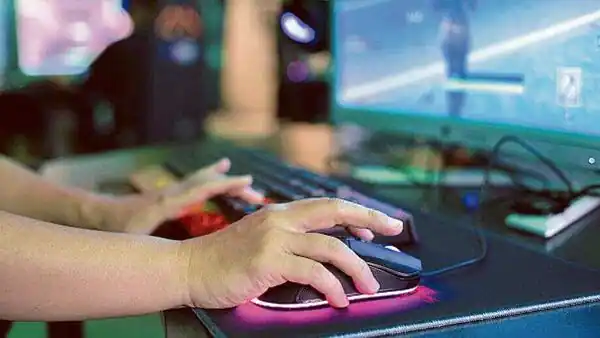Tech
Smalltown gamers make it a career

Another youngster, Zaid Afsar from Pratapgarh district in Uttar Pradesh, was a member of one of the dozen teams that recently made it to the India finals of the World eSports Cup 2021. Afsar started gaming casually in 2018 and became a professional gamer recently.
Shafiq and Afsar are just a couple of instances of the hundreds of youngsters from small towns and villages making the leap from casual gaming to professional or taking up other career opportunities in gaming, such as coaching, shoutcasting, managing eSports teams, or even setting up their companies.
“Around 75% of gamers now come from tier-II and III cities, from places like eastern Uttar Pradesh, Madhya Pradesh or West Bengal,” said Abhishek Aggarwal, co-founder and chief executive of Trinity gaming, a gaming talent management firm.
Shafiq started his company in 2020. “I started my eSports organization to provide a platform and resources to my friends and players who wanted to pursue professional gaming. Most of the players now come from small towns,” Shafiq said.
His organization has rosters in PUBG Mobile for the South Asia and the UAE regions. For India, he has rosters for Battlegrounds Mobile India, which TSM India, an eSports body, acquired in March 2021. Following the ban on PUBG Mobile in India in 2020 over security concerns, South Korean gaming firm Krafton had to launch an India-only version of the game called Battlegrounds Mobile India.
Interest in gaming in smaller towns has skyrocketed after the coronavirus outbreak.
A January report by Mobile Premier League (MPL), an eSports and skill gaming company, said tier-III cities such as Muzaffarpur (Bihar), Dhanbad (Jharkhand), Ganganagar (Rajasthan) and Baimanagoi (Chhattisgarh) have seen the number of new professional gamers double or triple in 2021.
“The pandemic has given a significant boost to the gaming industry across the world, and India is no exception. Internet penetration, affordable PCs and smartphones and a growing young and tech-savvy population has further fuelled this growth,” said Vinay Sinha, managing director, sales, AMD India. “The gaming community in India is dynamic, connected, and highly engaged with the ecosystem and the market. This has helped to expand the reach of gaming to tier-II and tier-III cities,” Sinha added.
Large technology companies, such as chipmaker AMD and gaming laptop and device manufacturer Asus, are also actively working with gamers in India. In January last year, Asus launched a virtual Republic of Gamers (ROG) Academy in India to nurture local talent. According to Sinha, AMD also supports and sponsors various gaming tournaments across the country for amateur gamers. Though millennials from small towns are taking gaming more seriously, Aggarwal rues that resources and opportunities are still limited and, after a point in their career, they have to move to larger cities.
Trinity Gaming currently manages more than 250 top content creators in India, such as Dynamo, Shreeman Legend, Antaryami, Jonathan & Alpha Clasher, who specialize as influencers for the gaming ecosystem.
“We work from multiple angles. We have a social media team that guides them on recent trends. We have an editing studio that helps them with graphics. There are multiple aspects, such as non-fungible tokens (NFTs). We also scout for new opportunities that help the creators diversify the monetization opportunities,” Aggarwal added.
The emergence of pro-gamers from smaller towns and villages can also be attributed to the changing perception of gaming.
Shafiq, for instance, points out the huge shift in mindset as many parents now reach out to explore the career opportunities in eSports for their children. “Until a couple of years ago, it was hard to convince players or even their parents to consider gaming as a career. But things are changing,” Shafiq said.
According to Aggarwal, eSports becoming a medal sport at the 2022 Asian Games in China has also validated the gaming industry and has changed how parents and the older generation perceive it.
Money is another attraction. A tier-I professional gamer who plays for one of the top teams, as an example, can earn anything between ₹60,000 and ₹500,000 per month, according to Shafiq. In addition, they can monetize through brand endorsements and exclusive streaming deals.
Never miss a story! Stay connected and informed with Mint.
Download
our App Now!!